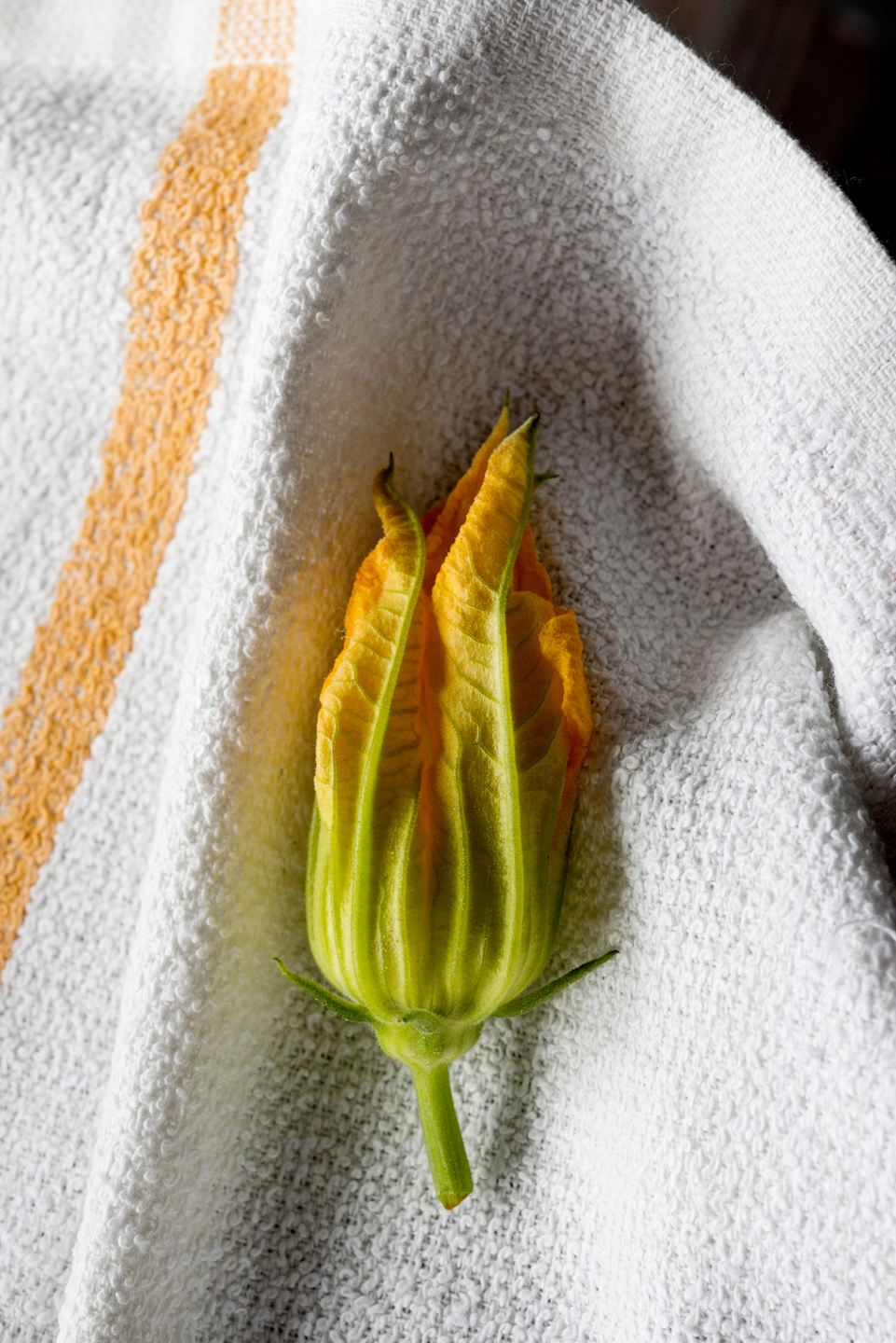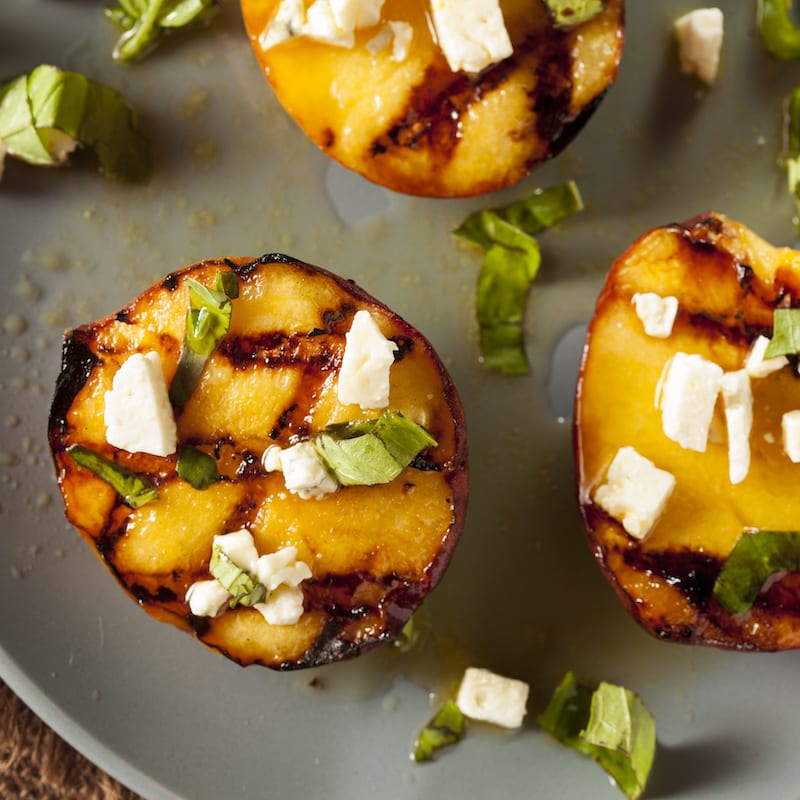An elusive summertime luxury, squash blossoms make for colorful, crunchy, and delectable additions to a range of dishes

While many feel comfortable incorporating a toss of colorful, edible flowers onto their summertime dishes, squash blossoms maintain notoriety for being a little intimidating. These large, edible blossoms are often served stuffed with seafood or cream and fried into a crisp, nearly crystalized version of themselves. But thinking of these blossoms solely as garnishes for upscale menus dismisses their easy versatility. Squash blossoms belong in simple kitchens, eaten by hand, and are ready to regain a reputation as a summer staple ingredient.
Where to Purchase Squash Blossoms
Squash blossoms can be found at many farmers markets from July through August. They can also be procured at most local Hispanic grocery stores or speciality markets. Of course, you can grow your own within home gardens. We recommend picking the flowers at their full bloom, just before the squash begins to develop. However, take caution as you pick, as male and female blossoms will have a difference in texture, taste, and can affect your overall harvest. Both blossoms are edible, but most gardeners gravitate toward male blossoms since they are more abundant and will not affect a later squash harvest.
Squash blossoms will retain a light sweetness in flavor and an essence of whichever plant you harvest from (i.e. the earthy taste of summer squash or the slight bitterness of zucchini). If harvesting from your garden, it’s best to pick in the morning and consume the same day. Ideally, you should also consume your blossoms day of if you purchase them from a market, but you can store them in a bowl of ice water in the fridge for up to 48 hours.
How to Clean Squash Blossoms

Take kitchen shears or tweezers and create a small incision where the stem meets the flower. Gently blow into the flower to create natural space between the petals. Next, remove the inner parts of the flower (stamen or pistils). Wipe away any dirt or debris from the outside of the flower with a damp cloth or with a pastry brush.
Squash blossoms often appear in Mexican, Turkish, and Italian cuisine, but their utility is vast. Some of the most popular ways to prepare squash blossoms is with a creamy, often seafood-based filling and then fry or pan-sear the exterior until crispy. This results in an experience similar to a cannoli: a crunch into the outer layer with a creamy burst of (in this case) savory flavor in the middle. The beauty here is the flower maintains its rich color throughout the cooking process.
Top pizzas, salads, and pasta with blossoms to add an element of sweet, earthy flavor and pops of orange or yellow color to the plate. Most often, you’ll find them accompanying other quintessential summer flavors: bright herbs, zesty citrus, and fresh produce. From decorative toppings to stand-alone dishes, here are a few recipes to work squash blossoms into the everyday kitchen.

Our Favorite Squash Blossom Recipes
Squash Blossom Salad
To feature both bloom and produce, chef Nathan Thurston creates a chilled herby salad made with gold bar squash, followed by freshly grilled zucchini and quick-seared ricotta-stuffed squash blossoms.
Squash Blossom Frittata with Field Peas
Chris Rainosek of The Noble South in Mobile, Alabama, incorporates squash blossoms into a simple farm-fresh frittata with field peas, a bounty of mixed herbs, and bacon for a touch of smokiness.
Crab-Stuffed Squash Blossoms with Salsa Verde
Though shrimp is used traditionally to stuff squash blossoms, New Orleans chef Alon Shaya derived inspiration from his time in Italy and uses crabmeat as an alternative. The shorter cook time also helps reduce the risk of overcooking the seafood.
Keep Reading
Key Ingredient
Key Ingredient: Duke’s Mayonnaise
With its cult-like following and range of versatility, this regional mayonnaise should be a big part of your everyday summer pantry.
share
trending content
-
New Restaurants in Arkansas
-
Shrimp and Grits: A History
by Erin Byers Murray -
Tea Cakes, A Brief History
by TLP Editors -
Gullah Geechee Home Cooking
by Erin Byers Murray -
The History of Fajitas
by TLP Editors
More From Key Ingredient
-
Key Ingredient: Preserved Lemons
-
Key Ingredient: How Do You N’duja?
-
In Season: Persimmons
-
Key Ingredient: No Small Peanuts
-
Key Ingredient: Barbecue Pickled Cabbage








